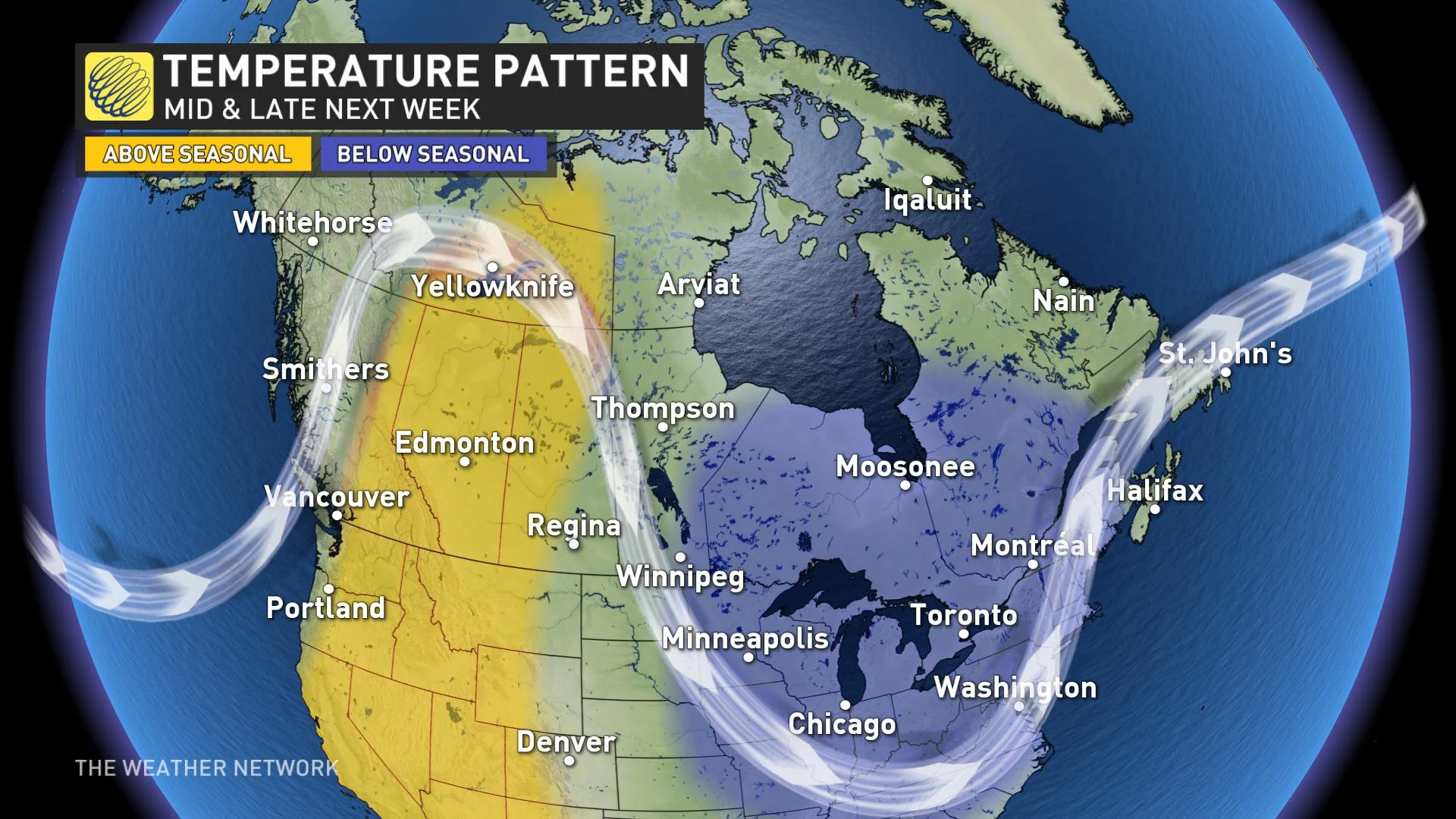
Typhoon across the globe sends parts of Canada into much colder fall pattern
Typhoons in one part of the world can have a major impact on the jet stream pattern, and often our confidence in a long range pattern for Canada is higher when there is a typhoon. This means a colder pattern for many is coming.
Hagibis exploded from a tropical storm to a super typhoon -- with wind speeds of 240 km/h -- in just 18 hours over the weekend of October 5.
This powerful storm continued to track into Japan this past weekend, briefly paralyzing Tokyo and becoming the strongest storm to hit the area in 60 years. The death toll climbed to 66 on Tuesday as rescuers continued to slog through mud in an increasingly "grim search" for the missing, Reuters reported. Thousands of homes also remained without power or water on Tuesday with the threat for rain diminishing as the week wears on.
Hagibis, now an extra-tropical cyclone, is positioned north of the Aleutian Islands in Alaska where lashing winds and rain are expected this week. As the storm moved further north, its shape significantly changed and now resembles one of two "commas" swirling in the Pacific. These comma shapes are very typical when a low pressure system interacts with cold and warm air masses, but it's also somewhat rare to get two of these extra-tropical cyclones swirling back to back as they are.

While the remnants of Hagibis will not make the trip all the way across the Pacific and into Canada, it will still have a significant impact on our national weather pattern later this week.
HOW A TYPHOON IMPACTS THE WEATHER PATTERN IN NORTH AMERICA
The best way to visualize how a typhoon on the other side of the world can affect our weather pattern is to think of the jet stream as a rope. As the typhoon tracks north out of the tropics, it pumps heat into the atmosphere. This extra heat strengthens the ridge of high pressure over the western Pacific Ocean and causes the jet stream to track further to the north. This has a downstream domino effect, similar to what happens when you quickly raise the end of a long rope – further downstream the jet stream will dive to the south.
This sets in motion a chain of events that produces a more amplified jet stream pattern across North America. The jet stream will track well to the north and then dive to the south, leading to a contrasting weather pattern across the country.
The key to which regions will see a colder pattern due to the jet stream diving to the south is determined by the track of the typhoon on the other side of the ocean.
When a typhoon takes a track near or just east of Japan, typically the dip in the jet stream brings colder weather into the Great Lakes region. When the track is further to the west -- into Korea or China -- the dip in the jet stream will be further to the west with a colder pattern for western Canada and a warmer pattern for the eastern half of the country.
WATCH BELOW: OCTOBER PATTERN TURNS MUCH COLDER FOR EASTERN NORTH AMERICA
The track of a typhoon in the western Pacific is often a more useful long forecast tool than the computer models that are used to help develop forecasts. For example, an extended period of warm weather is very unlikely a week after a typhoon has come out of the tropics with a track towards Japan.
As a result, we are going to really start seeing the effects of what was once Typhoon Hagibis with a cooling pattern shaping up for the next two weeks of October in Ontario and Quebec.
The map below shows our forecast pattern for the middle and end of this week. This pattern will bring several days of chilly weather to Ontario and Quebec, while the central and western Prairies will see milder temperatures.

After a brief few days of warmer weather this weekend, the final week of October -- and into early November -- will bring an extended period of colder than normal temperatures to the Great Lakes region as well. This pattern would bring the potential for significant lake-effect snow in the traditional snow belt areas before Halloween.